|
CV1526Sensibly equivalent¶ to:3EG1See also:
|
|
|

|
The CV1526 is an interesting CRT from several perspectives, firstly it is relatively long for the screen diameter, secondly there is a fourth anode acting after the deflection plates and PDA (post deflection acceleration) is normally seen on later tubes and finally the pinch ends with a pressed glass foot. These features seem to point to an early high frequency display. The length allows for a small deflection angle and thus requires a low deflection voltage. Developing a high voltage at wide bandwidth requires special amplifier valves and we may conclude that these were not available. The 4.0 V heater was common on UK valves in the 1930s but not the 1940s. The glass foot also suggests mid to late 1940s and conflicts with a 4.0 V heater. The Cintel advert from 1958 does not give an introduction date but confirms that it was a current product at that date.Nick (G0HIK) says that the CV1526 was used within the indicator unit Type 208 on Rebecca Mk IV Radar. The Rebecca Mk IV dates to 1947. Wikipedia: The Rebecca/Eureka transponding radar was a short-range radio navigation system used for the dropping of airborne forces and their supplies. It consisted of two parts, the Rebecca airborne transceiver and antenna system, and the Eureka ground-based transponder. Rebecca calculated the range to the Eureka based on the timing of the return signals, and its relative position using a highly directional antenna. The 'Rebecca' name comes from the phrase 'Recognition of beacons'. The 'Eureka' name comes from the Greek word meaning 'I have found it!'.The CV1526 was developed from the VCR526.The KB/OR identifies this valve as being made to specification K1001 or K1006, the B denotes qualification by a UK authority and the OR identifies the maker as Rank Cintel, Rotunda.The PDA a4 has connects to the envelope via a side contact as would be found on television tubes.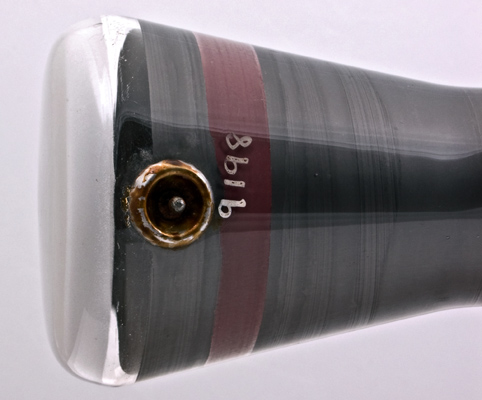
The connection to the fourth anode. 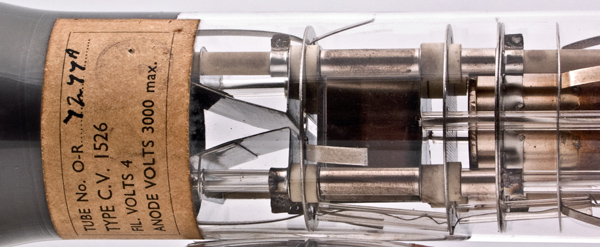
The identification label, deflection plates and electrodes assembled on ceramic rods.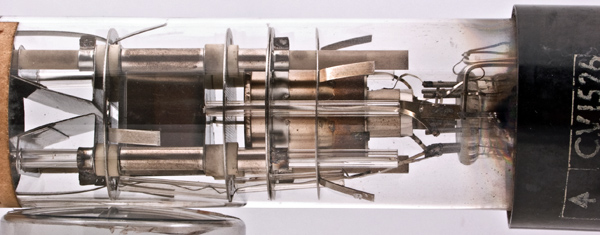
The Pinch is interesting in that it ends with a pressed glass foot rather than the traditional pinch.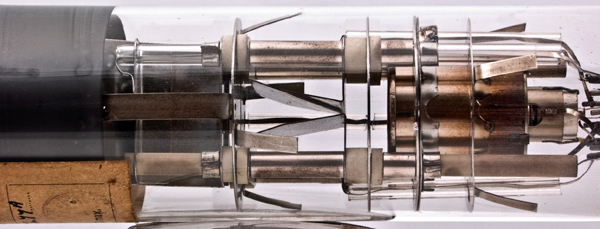
The gun assembly.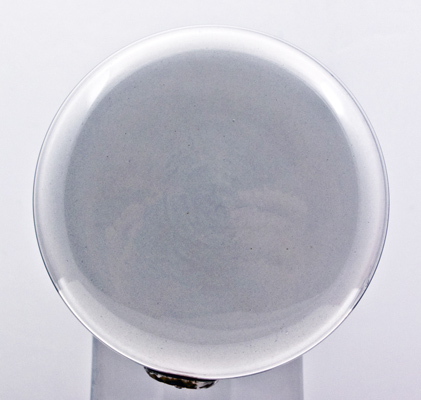
The screen is domed as laminated glass faceplates to allow flat screens had not been developed. The domed screen puts the glass in compression and the tube is less likely to fail due to implosion of the screen. The screen has a maximum diameter of 68 mm.The end window envelope is 40 mm in diameter, and excluding the base pins is 230 mm tall.Reference: Data-sheet. Type CV1526 was first introduced in 1958. See also 1958 adverts. |
Pin Connections
| 1 | 2 | 3 | 4 | 5 | 6 | 7 | 8 | 9 | 10 | 11 | 12 | tc |  k | g1 | h | h | a2 | nc | Y2 | X2 | a1,a3 | X1 | Y1 | nc | a4 |
|
|
Absolute Maximum Operating Conditions¶
CRT | Vh | Ah | Va | 
| 4.0 | 1.0 | 3,000 |
|
Updated October 26, 2024.
|
|